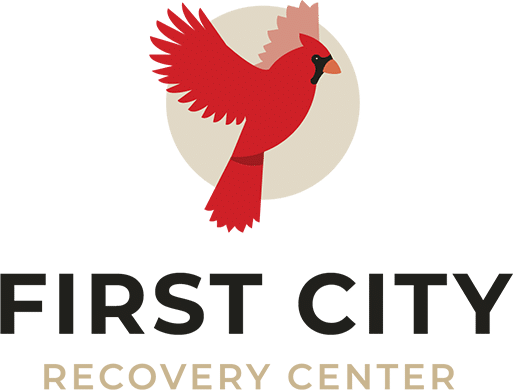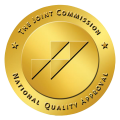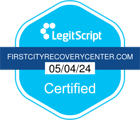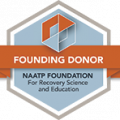Learn Why Fentanyl Misuse Can Be Deadly
The illegal use of fentanyl in the United States is widespread and often lethal. The Centers for Disease Control and Prevention (CDC) reports that opioids, mainly synthetic ones like fentanyl, are the main source of drug overdose deaths. Nearly 73% of opioid overdose deaths involve synthetic opioids. Although fentanyl plays a legitimate role as a prescription painkiller, its misuse is a serious and growing problem that healthcare professionals are using every weapon in their arsenal to fight.
Table of Contents
ToggleWhat Is Fentanyl?
A synthetic opioid chemically related to morphine, hydrocodone, and heroin, fentanyl is up to 50 times more powerful than heroin and < a href=”https://www.cdc.gov/stopoverdose/fentanyl/index.html” target=”_blank”>100 times stronger than morphine. When properly prescribed and used, fentanyl provides significant pain relief for several hours, offering a high level of comfort to patients with terminal illnesses like cancer. It is also used to treat severe, chronic pain following surgery or an automobile accident. When abused or used in combination with other drugs, though, its benefits can be outweighed by great risks.
What Are Opioid Drugs?
Opioids are classified as drugs that can depress the central nervous system (CNS). There are three classes of opioids:
1.Phenothiazines
This drug class is typified by drugs used to treat conditions such as depression, anxiety, and obsessive-compulsive disorder. These drugs usually contain a high level of opioid activity within the central nervous system and affect the brain’s psychological chemistry. Examples include benzodiazepines like Valium (diazepam), Ativan (alprazolam), and Xanax (alprazolam).
2.Narcotics
Narcotics include illegal drugs like heroin and prescription painkillers like fentanyl, Percocet, and Vicodin. These drugs are usually classified by their chemical structure and the type of effects they have on the CNS. Narcotics are generally prescribed medications used to treat moderate and severe pain. They are also used to treat anxiety and depression.
Fentanyl is listed as a Schedule II narcotic under the United States Controlled Substances Act of 1970. This means it has a high potential for abuse and can cause severe psychological or physical dependence. The U.S. Drug Enforcement Administration (DEA) considers it to be a dangerous drug.
3.Stimulants
Stimulants work by stimulating the CNS to release hormones like adrenaline, noradrenaline, and dopamine to create alertness, euphoria, improved cognition, and a rapid heart rate. Stimulants are typically abused to give an individual more energy while studying or working. These drugs also help to suppress hunger. Stimulants are illegal in some regions of the world, while generally considered illegal in the United States and Europe.
Ways to Administer Fentanyl as a Prescription Drug
Doctors may prescribe fentanyl as a shot, transdermal patch, or lozenge. The patch is placed on a person’s skin to wear for several days at a time. This delivery method allows for slow, steady absorption into the body to treat pain for long periods without abdominal discomfort. These patches come in different strengths to be adjusted depending on how much pain relief you need.
Fentanyl can also be administered as a sublingual tablet known as Abstral. This is placed under the tongue to be absorbed through the gastrointestinal tract. It is used to relieve breakthrough pain in people who already take opioid medication around-the-clock for cancer pain.
Side Effects of Fentanyl
Even when taken as prescribed, fentanyl can cause some troubling side effects. Some of the most common are:
• Fever: Fentanyl tends to increase breathing and heart rate, making someone feel very hot. This can cause someone to have a harder time staying cool in hot weather.
• Respiratory depression: Breathing can slow to the point where the brain is deprived of necessary oxygen, and death may occur.
• Memory loss: Fentanyl can lead to short-term and long-term memory issues.
• Cognitive issues: Fentanyl slows down the thinking processes, leading to slower reactions and slower response times. The user may experience cognitive problems like confusion or difficulty in thinking through problems or finding the right words when speaking.
• Physical discomfort: This may include headaches, vomiting, constipation, and diarrhea.
• Tolerance and addiction: Fentanyl carries a severe risk for both. Anyone who uses this drug for longer than prescribed may develop a tolerance and need to use more of it for the same effect. This can lead to abuse and dependence, which often leads to an overdose.
Dangers of Recreational Use
People addicted to fentanyl will often take it together with other drugs for a more intense high. When people take this drug for recreation, they are often unaware of the risks and side effects of abusing it regularly.
Fentanyl is meant to be taken along with other prescribed analgesics to relieve severe pain. When you take fentanyl recreationally, especially with other opioids or alcohol, it can cause serious problems with breathing. Even one dose can kill. Overdose symptoms include coma, lethargy, and respiratory arrest. While naloxone (Narcan) can be used to treat someone with a fentanyl overdose, fentanyl works so quickly that it might be impossible to revive the person.
Fentanyl Addiction and Overdose
In February 2022, the DEA reported that overdose deaths were rising at an alarming rate, especially those caused by fentanyl. For the first time ever, drug overdose deaths exceeded 100,000 in the 12-month period ending in April 2021. This represented a 28.5% increase over the same period a year before.
Concern about the dangers of fentanyl. When abused, this powerful opioid drug is a very real threat to public health —especially considering that even infrequent use can lead to adverse health effects and even death.
If you start using fentanyl recreationally, before long, you may find yourself addicted to the drug. This is why it is so important to get help if you begin taking this drug illicitly. Your family and friends may be able to provide help when you need it most, as long as they are aware of the behaviors or signs associated with drug abuse and know how they can provide support.
Substance abuse treatment programs provide recovery options that help people build new lives without drugs or alcohol. It is important to be aware of the signs indicating drug abuse so that you can get help to recover from addiction before it gets out of hand.
Fentanyl Addiction Treatment
In an addiction treatment center, a doctor may administer a medication to help with withdrawal symptoms after a client has used the drug recreationally. This is also referred to as detox, and while it’s not an enjoyable process, it’s key to getting clean and staying clean
Detoxing from fentanyl can be extremely dangerous without supervision and professional medical attention, as this substance creates an intense dependence on repeated use. Those who start abusing fentanyl will often develop a tolerance and require more and more of the drug each day for them to feel the same effects. This causes many people to use fentanyl in very high doses, putting them at far more risk for overdose and death.
Fentanyl Withdrawal Symptoms
Tapering off or stopping fentanyl use completely can cause withdrawal symptoms that include:
• Severe cravings for the drug
• The inability to control leg movements
• Goosebumps and cold flashes
• Vomiting
• Diarrhea
• Difficulties sleeping
• Pain in the bones and muscles
Due to withdrawal’s high level of discomfort and the danger of going “cold turkey” on your own, detox should always be accomplished in a medically supervised setting like our program at First City Recovery Center.
10 Ways to Help Someone Struggling With Fentanyl Addiction
Because fentanyl is so powerful and addictive, it can be hard to stop using it, even with the best of intentions. Here are some tips on how you can overcome addiction to fentanyl or help a loved one on the path to recovery and a happy, healthy sober lifestyle.
1. Recovery center rehab is the strongest option to conquer a fentanyl addiction. It’s an intense treatment that involves various mental and physical health therapies, plus recovery support and guidance. At First City Recovery Center, we also offer outpatient care and support to help avoid relapse while recovering.
2. A drug called methadone is often used to help with detox from fentanyl. Methadone works by exerting an effect that’s similar to that of fentanyl since it’s an opioid that binds to the same receptors in the brain. Methadone is not nearly as intense as fentanyl, though. This allows those struggling with addiction to use methadone without suffering from the most severe side effects.
3. Avoid mixing fentanyl with alcohol or other types of drugs. This will only increase the risks associated with using fentanyl and could potentially make your physical dependence on this opioid even worse.
4. Get plenty of sleep. When you’re in a state of rest, your brain is more likely to feel balanced and less triggered by cravings for fentanyl or other potentially harmful substances.
5. Take care of yourself physically by eating well and exercising regularly, just like you would if you were simply concerned with improving your overall well-being.
6. Don’t use fentanyl unless your doctor tells you that it’s necessary to relieve sudden pain due to a serious condition for which you are already taking analgesics that your physician has prescribed. It’s a tremendous amount of work to get clean, and once you do, it’s important to stay clean.
7. Don’t use fentanyl alone. Stay as safe as possible by ensuring that you have a support system of people who care about your well-being when you are using this drug.
8. If possible, avoid becoming dependent on substances altogether. This is the best way to overcome addiction to fentanyl or any other harmful drug.
9. If you have stopped using and experience fentanyl withdrawal, get help as soon as possible. You’ll be putting yourself at a much higher risk for relapse, or even death, without it.
10. Don’t try to overcome your addiction to fentanyl on your own. Realizing that you’ve become dependent on this drug is a sign that you need professional help to stop taking it and maintain your sobriety. Don’t give up. Help is always available, and recovery is possible!
Conclusion
Recovery in a reputable rehab center is your strongest option for conquering a fentanyl addiction. It’s an intense treatment that involves various mental and physical health therapies, plus recovery support and guidance. At First City Recover Center, we we strive to provide
high-quality treatment programs that serve the recovering client as well as his or her family. Reach out to us and speak with an expert who can help you or your loved one begin recovery now.

MD, Psychiatrist
Dr. Vahid Osman, MD is a psychiatry specialist in Indianapolis, IN.
Dr. Osman completed a residency at Austin State Hospital. He has over 32 years of experience in Psychiatry & Behavioral Health. He is board certified by the American Board of Psychiatry and Neurology.




